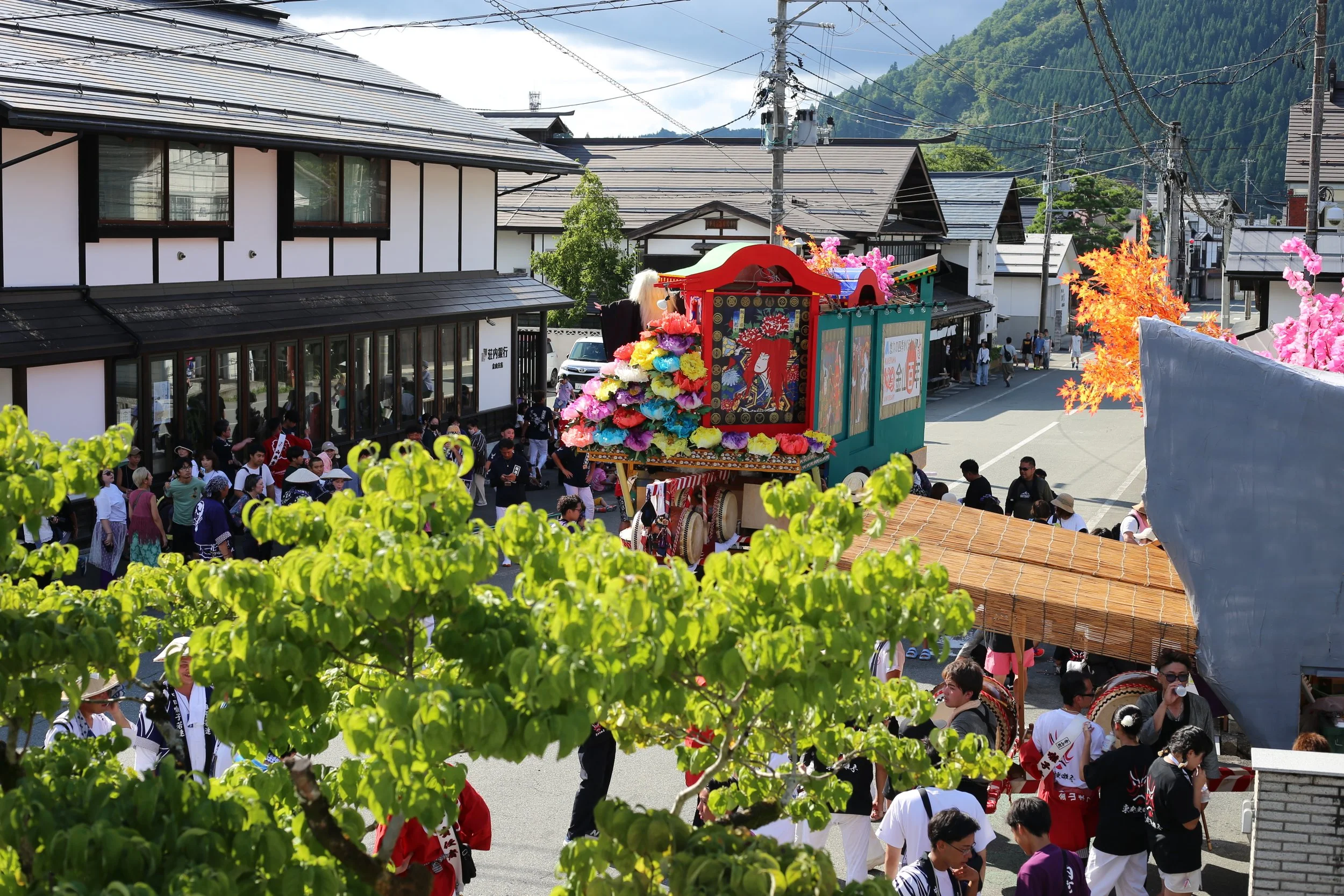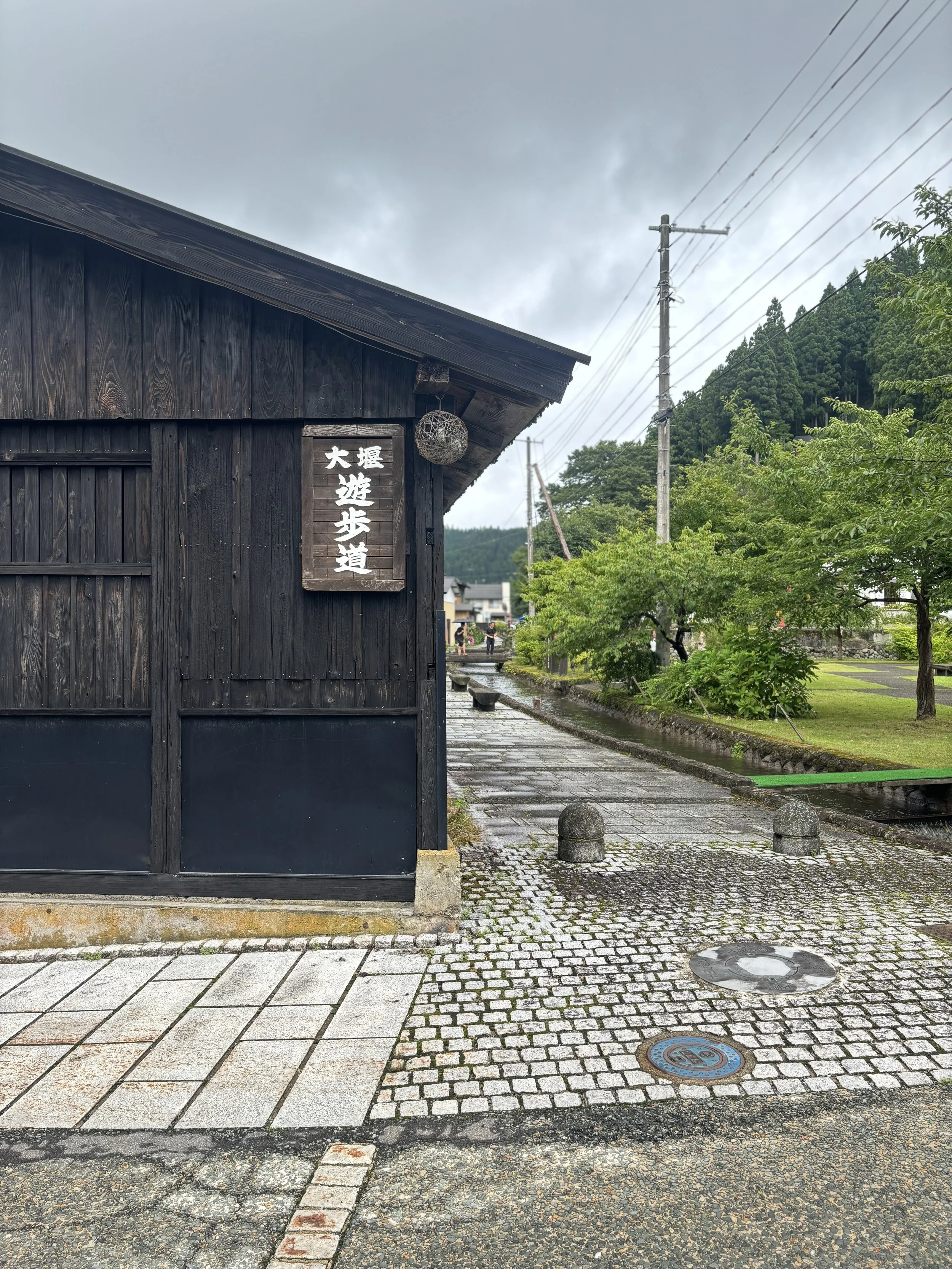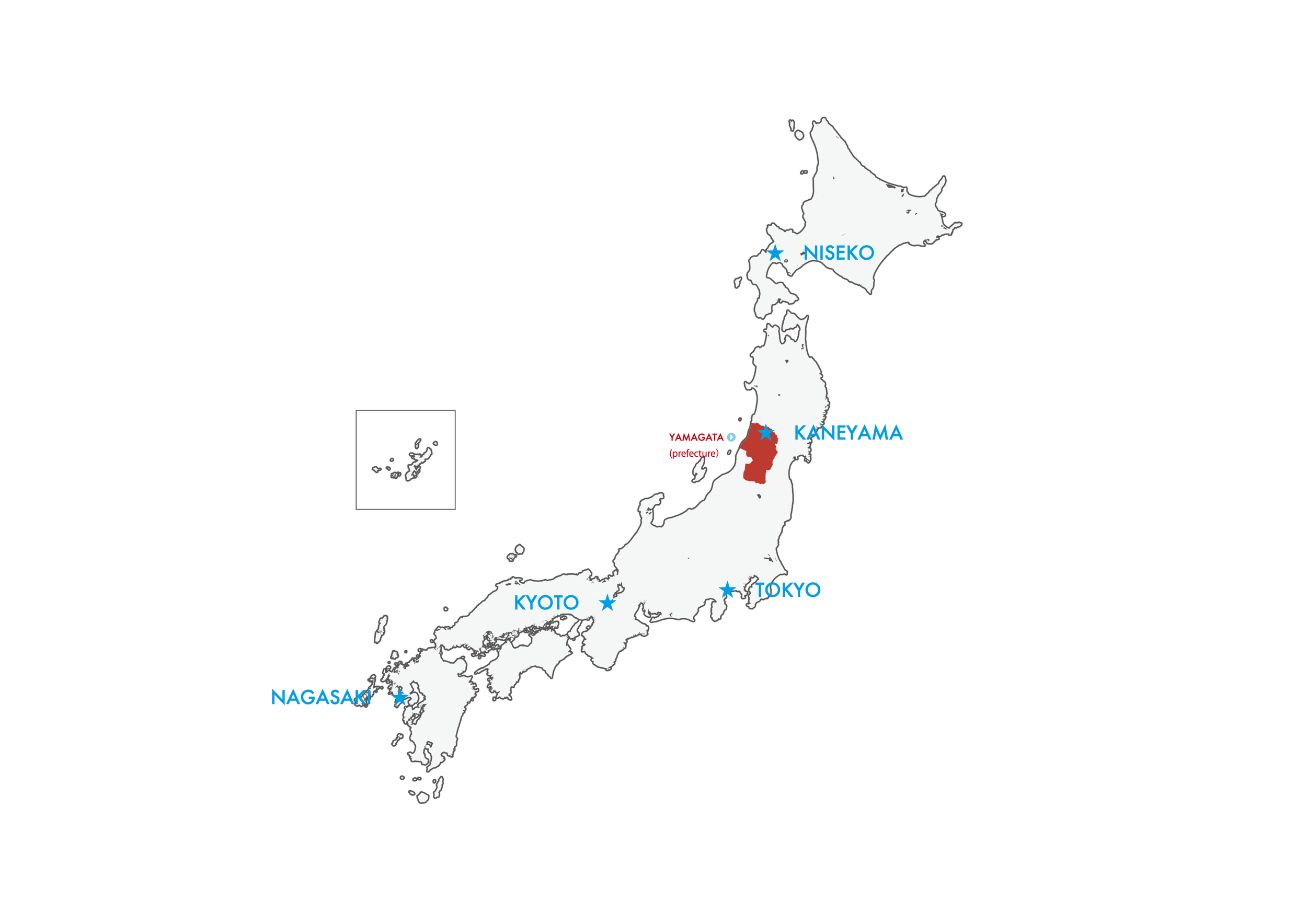the Land
town of Kaneyama
a.k.a. Golden Mountain, a town of 4,500 people
A Town That Remembers: In Kaneyama, Time Moves Gently
Tucked within the mountainous contours of Yamagata Prefecture lies Kaneyama, a quiet town of just under 4,500 residents, as of early 2020. Spanning some 162 square kilometers, it is a place where the past lingers in the architecture, where streets seem to whisper stories, and where nature and history embrace in a rhythm all their own.
Historical Significance and Townscape
Once a vital post town along the Ushū Kaidō during the Edo period, Kaneyama played host to travelers and merchants moving goods—and news—through northern Japan. Today, it remains a living archive of that era. With whitewashed storehouses and steep, dark-brown gabled roofs, the townscape reflects not simply nostalgia, but a deliberate act of preservation: a collective commitment embodied in the aptly named “100 Years of Streetscape Creation Campaign.” Here, beautification is not cosmetic but cultural. It is little wonder, then, that Kaneyama has been honored by Japan’s Ministry of Land, Infrastructure, Transport and Tourism with the “Beautiful Townscape Award.”
The centerpiece of Kaneyama’s serene appeal is Ozeki Park, where an agricultural weir dating back to the late Sengoku period channels history as fluidly as it does water. Between late April and mid-November, the canal is animated by the flutter of nearly 150 ornamental carp, whose bright colors flash against the town’s earthy tones—a scene as delicate as a brushstroke in an old scroll painting.
Cultural Highlights
Culturally, Kaneyama balances reverence with reinvention. The Exchange Salon Post, a faithful reconstruction of the original Kaneyama Post Office, now serves as a gathering place for locals and a welcoming respite for visitors, its walls exuding the warmth of locally sourced Kaneyama cedar. Not far off, the Kurashikan—once the storehouse of a prominent local family—now houses the town’s Chamber of Commerce and Industry. It also opens its sliding doors to host traditional tea gatherings between May and October, where the ritual of matcha and wagashi becomes a portal into an older, slower rhythm of life.
Each August, the town bursts briefly into joyful revelry during the Kaneyama Festival, held from the 14th to the 16th. Portable shrines (mikoshi) sway through the streets, followed by dashi floats adorned with elaborate dolls, their papier-mâché faces lit by lanterns. The festival closes with fireworks that echo across the hills, a reminder that even in stillness, this town can sing.
Natural Attractions
Kaneyama’s natural beauty is perhaps its most understated marvel. A grove of ancient cedar trees, the Ominowa no Osugi, stands like silent sentinels just beyond the town center—some believed to be nearly three centuries old. The seasons here are dramatic and unhurried: rice fields rippling in green during summer; a hush of snow blanketing rooftops in winter. The landscape shifts, but the pace remains constant.
Activities and Experiences
For those drawn to immersion over itinerary, Kaneyama offers more than scenes to behold—it offers experiences to inhabit. One can rent a bicycle through the “COCO-BIKE” program and meander along narrow lanes flanked by cedar and rice paddies. At the Kishi Furniture Store, travelers can try their hand at crafting picture frames or chopsticks from local wood, guided by artisans whose skills are as quietly refined as the town itself.
Further afield, in Ariya, lies Kamuro Farm—a 70,000-square-meter expanse carved out of forest for agricultural training in Japan’s imperial past. Today, it hosts horse therapy programs, a surprising yet poetic repurposing of land once tethered to empire. In Kaneyama, even the land is learning how to heal.
Here, tucked between mist and memory, is a town that does not chase the future, but listens patiently as it arrives.
Mogami region and Yamagata prefecture
a.k.a.”At the Top” including Shinjo, Tozawa, Okura, Sakegawa, Mogami, Kaneyama, Mamurogawa, and Funagata
The Mogami region, situated in Yamagata Prefecture, Japan, is renowned for its rich history, vibrant cultural traditions, and stunning natural landscapes. Encompassing cities and towns such as Shinjo, Tozawa, Okura, Sakegawa, Mogami, Kaneyama, Mamurogawa, and Funagata, the area offers a diverse array of experiences for visitors.
Cultural and Historical Highlights
A centerpiece of the region's cultural heritage is the Shinjo Festival in Shinjo City. This annual event features approximately 20 elaborately decorated floats depicting scenes from Kabuki and historical tales, paraded through the city to the accompaniment of spirited chants and traditional music. The festival's lively atmosphere and artistic displays draw numerous visitors each year.
Natural Attractions
The Mogami River, often referred to as the "mother river" of Yamagata Prefecture, traverses the region, offering picturesque boat tours through the Mogami Gorge. These cruises provide passengers with breathtaking views of mountains, waterfalls, and lush scenery, often enhanced by boatmen singing traditional Japanese river songs.
Another natural wonder is the Shiraito Falls in Tozawa Village. Standing at 120 meters, it is the largest of the 48 waterfalls along the Mogami River and has been recognized as one of "Japan's Top 100 Waterfalls." The falls have historical significance, having been featured in classical Japanese literature such as the "Gikeiki" and Matsuo Basho's "Oku no Hosomichi."
Hot Springs and Wellness
The region is also celebrated for its numerous onsen (hot spring) towns, each offering unique experiences. Hijiori Onsen in Okura Village boasts over 1,200 years of history, providing visitors with a traditional and tranquil retreat. Semi Onsen in Mogami Town, nestled along the Ogunigawa River, is steeped in legend and offers a serene environment for relaxation. Akakura Onsen, also in Mogami Town, features inns with individual spring sources, allowing for varied water qualities and therapeutic benefits.
Culinary Delights
The Mogami region's culinary scene is deeply rooted in its natural surroundings. Local specialties include Sansai - mountain vegetable, soba noodles, Mogami beef and Ramen. A distinctive local confectionery is ”Shiso-maki" a local dish in which miso is wrapped in green shiso leaves and deep-fried and "Kujira-mochi," a steamed rice cake made from glutinous and uruchi rice flour mixed with sugar, miso, and soy sauce. “Kujira-mochi” traditionally prepared for the Peach Festival, its name, meaning "whale rice cake," is thought to derive from its large size or resemblance to salted whale meat.
Outdoor Activities
For those seeking outdoor adventures, the Maemori Plateau in Mogami Town offers expansive natural beauty. Visitors can engage in activities such as horseback riding, camping, and interacting with animals like horses, deer, goats, and sheep. The area also provides opportunities for hands-on experiences like sausage and ice cream making, ensuring a full day of enjoyment amidst nature.
The Mogami region seamlessly blends cultural richness, historical depth, and natural splendor, making it a captivating destination for travelers seeking an authentic Japanese experience.






